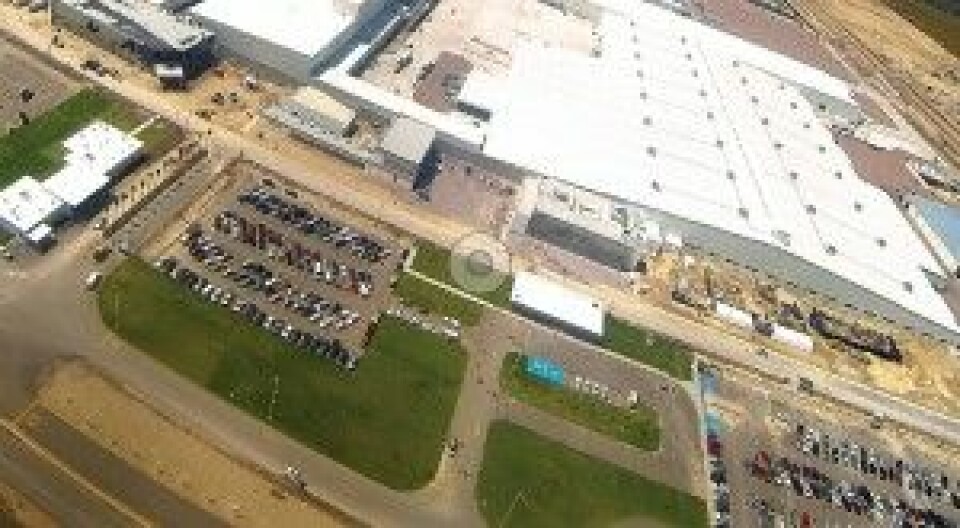Special outbound report: For the rápido go the spoils in Mexico
Logistics providers that don’t act quick could fall behind in the race to handle rising volume out of Mexico. Our special Mexico report continues by exploring the opportunities for vehicle logistics
Reporting from south of the border
The finished vehicle logistics portion of this multi-part report, written by editor Christopher Ludwig, finds that most outbound executives have rail and port capacity on their minds. So too, however, do many providers – but are they planning to invest enough, fast enough?
Below find links to other stories in this special report:
Other relevant outbound stories include:
For the inbound and supply chain reports on Mexico, read the following stories:
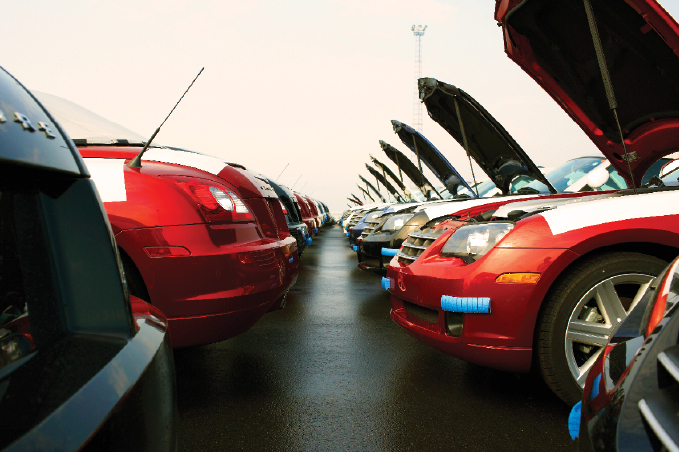 "The time is now to make our move,” says Sergio Gutierrez, head of Mexico for Wallenius Wilhelmsen Logistics (WWL), referring to the contracts the company is pursuing with carmakers in the country. “Deals tend to last 3-5 years, so if we don’t secure anything now, there will be a gap before we can try again.”
"The time is now to make our move,” says Sergio Gutierrez, head of Mexico for Wallenius Wilhelmsen Logistics (WWL), referring to the contracts the company is pursuing with carmakers in the country. “Deals tend to last 3-5 years, so if we don’t secure anything now, there will be a gap before we can try again.”
With competition heating up, companies slow off the mark in Mexico could fall behind its expansion. Gutierrez admits WWL didn’t succeed in a few recent bids, but the company is not short of business in Mexico, where it moved around 1.4m vehicles through eight terminals and yards in 2013.
This year, WWL starts operations at a vehicle distribution centre at Nissan’s second plant in Aguascalientes, and expects growing volumes for ocean movements to the ports of Veracruz and Altamira.
“We can try again with plants in 2-3 years, but some companies cannot afford to wait,” he says.
Gutierrez’s comments capture something of the mood for finished vehicle logistics today in Mexico among providers as well as carmakers. The measure has been taken of the Mexican automotive sector, and most companies feel on the cusp of something big. The recent figures tell part of the story, with production nearly doubling since 2009 to more than 2.9m light vehicles and exports up similarly to 2.4m units. IHS Automotive forecasts production of 3.17m this year, rising to nearly 3.6m in 2016 and approaching 4.5m by 2020. The rash of investments and new plants, from Audi to Nissan and Mercedes-Benz, are well documented. There are new entrants in the domestic market too, including Hyundai, which could presage a plant investment.
However, even with the prospect of a 50% expansion, there is a sense that things could pass you by in Mexico; hesitating too long will have consequences. Logistics companies are desperate to be included in upcoming tenders and planning studies, while OEMs have voiced loud concerns over whether rail providers and shipping operators will actually invest enough to meet demand. In other words, everyone wants to see things happening ‘now’.
And while there is plenty of evidence that rail providers and terminal operators are starting to invest more earnestly in new capacity, there are some in the sector who think it may not be enough, or that it won’t be ready in time.
"Rail providers are growing, but not as fast as OEMs in Mexico. We are looking at additional options such as short-sea shipping to cover our growth" - Sofia Garcia, Nissan
“If the situation doesn’t change with rail, there is definitely going to be a tipping point and there will be no way out,” says Mercedes Figueroa, head of Mexico logistics and customs at Fiat Chrysler. “Certain regions of the country will use short-sea shipping and other equipment.”
“Rail providers are growing, but not as fast as OEMs in Mexico,” says Sofia Garcia, logistics services purchasing manager for the Renault-Nissan Purchasing Organisation. “We are looking at additional options such as short sea to cover our growth.”
Daniel Saenzpardo, Nissan Mexicana’s logistics director, says rail is still difficult to beat when it comes to lead times and efficiency, although he sees room for further investments by the railways. “The total pool of equipment in North America may not be growing according to the volume’s demand,” he says.
Nissan, as the country’s largest OEM, is a particularly significant user of rail transport in Mexico, including from Aguascalientes and a rail ramp in Toluca, outside Mexico City. According to Saenzpardo, the carmaker sends 100% of Canadian-bound vehicles and 70% of US-bound vehicles by rail, crossing the border at both Eagle Pass and El Paso with Ferromex, and Laredo with Kansas City Southern de Mexico (KCSM). Nissan also uses rail from its first plant in Aguascalientes to move to ports for ocean exports, while in June it began railing cars to ports from its second plant there.
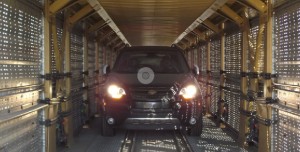
Gutierrez at WWL, which processes vehicles for rail and manages transport on behalf of Nissan, emphasises that the railways will have one of the most important roles to play in helping Mexico achieve its export targets. “The railways will play a paramount role in this expansion, and need to develop their networks as soon as possible to be able to allow for the expected growth,” he says.
Investing before the nightmares begin
Rail shortages in North America have been much discussed on the pages of this magazine and its conferences. They have been a big issue especially this past winter, when freezing temperatures affected braking systems and many wagons were left stuck in the wrong part of the country. By June, the backlog of vehicles waiting for transport across the continent had risen to 189,000 – mainly in northern parts of the US and Canada where the weather was worse – compared to historic levels of 69,000 units at this time of year.
For some, perhaps, these rail snarls are a foreboding of what could happen should providers not expand their fleets from Mexico. WWL anticipates that rail-based exports of vehicles will rise from 1.67m units last year to 1.99m this year and 2.81m by 2018. This year, carmakers that rely primarily on rail to move north, including Fiat Chrysler, have had to scramble to get vehicles out of the country. Figueroa admits that the carmaker sent five vessels from Altamira to Baltimore on a spot basis that would have ordinarily moved by rail.
It is that scenario of empty wagons positioned in the wrong place that is keeping many logistics executives awake at night. However, it should be noted that, thanks partly to the better weather in Mexico this past winter, the ‘rail nightmare’ has not yet come south of the border. Many carmakers, including General Motors, Chrysler and Nissan have said rail capacity is currently coping with volumes, even if there are delays.
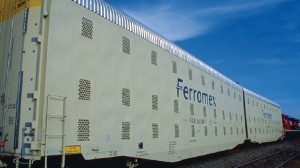
“Rail capacity has been better in Mexico than it has been in the US,” says Chris Styles, senior director of logistics for Nissan North America. “There have not been nearly as many issues.”
Saenzpardo adds that the lead times from yards to the different points of delivery and interchange at the border areas are very competitive. Indeed, on the whole, Nissan’s overall lead times have fallen. “Thanks to a very close communication with all of our logistics suppliers, our lead time today has a better performance than three years ago,” he says.
Styles and Gutierrez point to good work by TTX, which manages the common pool of wagons in North America, along with rule changes that have improved wagon allocation. For example, this year an equity system has been applied in Mexico in which the local railways’ investments in wagons is better reflected in their allocation.
Alberto Sanchez, automotive assistant vice-president at Ferromex, the country’s largest railway, admits it has struggled with the rail disturbances. “However, we have access to all of the empty equipment from the west coast,” he says.
Despite the relatively positive performance, Gutierrez warns that slower sales in the US (held back in part by bad weather) and plant launches have meant volume in the first quarter was not as good in Mexico as was previously predicted (production was up 5% in the first five months of the year). “A slower ramp-up might make companies think that the volume won’t be as high as expected,” he says, “but look at the investment companies are making in Mexico, including $2 billion for Nissan in Aguascalientes. Targets might take a year later than anticipated to be reached, but they will be reached.”
Sanchez maintains that the rail industry, together with the government, has been investing to meet the future growth. Ferromex has expanded its multilevel fleet by 950 wagons, an increase of 57%, and is ready to buy more if necessary. “Even if all additional automotive business were to be awarded to one railroad, the volume would translate into two additional trains per day, which we could handle without a problem,” he says.
The government is also supporting rail with significant investment. One example is at Celaya, Guanajuato state, which will re-route an interchange between Ferromex and KSCM from the centre of the city to several kilometres outside it, including a direct stop at Honda’s new plant. While the project’s completion will be several years after the plant opens, this is one of the most expensive infrastructure projects across Mexico (the federal government is paying for most of it). It is also an example of collaboration between the two railways, which are in heated competition.
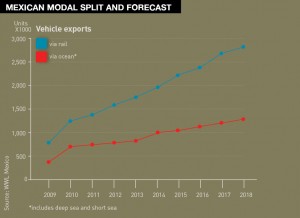
Chris Styles agrees the railways are generally on pace to match Nissan’s growth, although it will be important that service providers manage the capacity out of the new plant in Aguascalientes, which has a Ferromex link that enters the US at Eagle Pass and El Paso. “We’re working with Ferromex to make sure they are adding the tracks and services that Nissan needs,” he says. “We are also looking at other ways we can work with the railroads to increase capacity and throughput, such as optimising staging areas.”
Planning for rail is complex, not only for expensive track and siding investment, but also in allocating types of rail wagons. One challenge is that a number of plants in Mexico have been retooled to build completely new body styles that may require a switch between bi-levels or tri-levels, while all forthcoming model plans have not been completely revealed. Styles and Figueroa say, however, that they share long-term plans with railways and other carriers insofar as is possible. “We will provide carriers with location, volume information and the dimensions of the vehicles so that they can plan equipment and we can secure prices,” Figueroa says.
Sanchez adds that carmakers have “strongly” supported the railways by signing medium and long-term agreements with them. “This helps us model volumes from our customers and plan capacity and fleet size,” he says.
Is rail too big to fail?
There are complaints that the railways don’t focus enough on automotive and that their size makes them an unfair business partner. However, Sanchez says that, at 14% of revenue, automotive has recently become Ferromex’s second largest sector out of nine areas (after grain, which is several times bigger). This year, Ferromex expects its rail movements to reach 2m finished vehicles – a 20% growth on 2013.
Despite efforts by the railways to invest and be competitive, some lawmakers feel that the companies haven’t gone far enough. That was the reasoning behind a bill passed in the Lower House recently that shocked the sector; if it were to become law, the bill could strip Ferromex and KCSM of their exclusive concessions (which have another 14 years left) and allow others to operate as well. However, the railways have cried foul, saying the bill would illegally negate existing agreements and put future investment at risk.
Although few will comment on the record, some executives in Mexico admit that they can see the logic of the proposed reform and would welcome increased competition in the rail sector. Fiat Chrysler’s Figueroa says such reforms would benefit the industry if they were to lead to more open tariff schemes and better services. “On the other hand, they could negatively impact the rail network’s productivity and transit times,” she says.
"Ferromex struggles with [weather-related capacity shortages] as well. However, we have access to all of the empty equipment from the west coast" - Alberto Sanchez, Ferromex
There are others who privately express frustration at the lack of collaboration sometimes between the railways in Mexico. There have been disputes over access points or tunnels, which have potentially held back progress in some areas. Although there may not be many options for different rail providers in Mexico, it is clear that the two main ones are in very heated competition.
For his part, Sanchez says the railways are both competitive and aggressive investors. Ferromex’s board, for example, has recently pre-cleared a $2.5 billion capital investment plan, equivalent to 25% of the company’s annual revenue, which will be used for network capacity, locomotives and rail wagons. He points to the latest study by the OECD that ranks Ferromex as the most competitive and productive railway in Latin America. “We are confident that will help us prove that such an aggressive reform is not necessary,” he says.
The reform bill is currently being revised by the Senate.
Taking to the seas
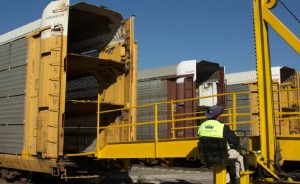
Carmakers have already been exploring other options from Mexico. As first revealed last year in this magazine, Honda has chosen a multimodal export route that includes using railways to the US, as well as to the ports of Veracruz and Lázaro Cárdenas for short-sea services to the US and Canada. Sources say that Mazda’s new plant in Salamanca is also using rail and short sea.
According to Saenzpardo and Garcia, Nissan has a policy of moving about 30% of its exports to the US by sea. The carmaker currently has services from Veracruz to the ports of Jacksonville and Baltimore, and recently added the port of Newark. “The railways say that they are growing, but we need to keep our options open,” says Garcia.
Volkswagen has had a roughly equal split between moving vehicles by rail and short sea from Mexico, while in recent years Ford has added regular services to Jacksonville and Baltimore to supplement rail. Historically, GM and Chrysler have used rail exclusively, except for spot moves. However, GM recently started more regular shipments from Altamira.
If the time is ‘now’ for railways to get their investments right, then it would also seem the timing is similarly crucial for shipping lines and ports to invest in the services to handle growing exports. Even executives who are somewhat less worried about rail capacity, such as Styles, believe there should be more choice. “Shipping lines and ports will have to perform with all the volume growth, as the industry is going to need a mix of more short-sea options along with rail,” says Styles.
The number of sea services out of Mexico has increased, with Nissan’s new route to Newark from Veracruz an example. Through its subsidiaries, MOL recently established regular routes to the US and Canada from Veracruz and Lázaro Cárdenas, while Höegh and WWL are routing more vessels on trans-Atlantic loops to stop between Mexico and the US.
Sanchez believes that the uptick in short-sea usage is only a temporary solution to the current rail backlogs across North America. “Short sea is a solution for some specific markets, but we do not see it as a long term, sustainable solution,” he reasons.
Furthermore, short sea is not without its own capacity concerns. Saenzpardo admits that Nissan has had some space issues at ports in the vehicle storage areas. He also would like to see rail access to ports improved. “We would like to see better infrastructure conditions in the country in terms of port developments. That includes more rail track lines to other ports to have alternatives for vehicle distribution,” he says.
What comes first, volume or frequency?
Even those that think short sea will gain more market share from rail agree that it will need more frequent services between the US and Mexico. With some exceptions, including charters and the east coast leg from Veracruz for MOL, almost all services between the US and Mexico are part of longer loops. That means sailing frequencies are several times a month at best and lead times can be long.
“In terms of overall price, short sea struggles against rail for export from Mexico,” says Mercedes Figueroa. “For lead times, the frequencies are limited, with one or two sailings per month compared to daily services for rail. Rail gives you a constant flow compared to sea.”
Saenzpardo also points outs that short-sea shipping has a longer lead time than rail, which not only risks losing sales but tends to translate into a higher damage rate because of the need to travel to ports, the extra handling at terminals, and the additional time on the water exposed to weather.
Despite the drawbacks, Saenzpardo says the total delivered cost of short sea can be beneficial. Nissan Mexicana and Nissan North America collaborate on inventory to avoid sales losses, while rigorous quality checks at Veracruz help deal with any potential increases in damage. Customs clearance is highly automated and equally speedy by both rail and sea, he adds. Saenzpardo also praises the overall quality of inland carriage as well as port handling. “There are opportunities where we can perform better, but overall the service is good,” he says.
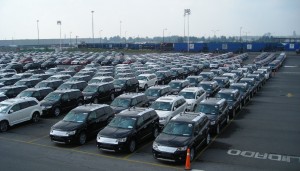
Other executives, including Dennis Manns, vice-president of sales and logistics at American Honda, have been on record saying that the longer delivery times by sea are balanced by lower costs. Certainly, the short-sea option gives carmakers flexibility in their distribution and perhaps even a certain leverage with rail providers, who are sensitive about losing market share. Vehicles delayed by rail shortages would take longer than export by sea, after all. However, without a greater density of service, there are still questions about whether sea will increase relative to rail. And there are some who think that shipping lines have been equally slow to respond to Mexico’s needs as the railways.
Gutierrez, however, points out that the same inconsistencies and unpredictable volumes that have held back some railway investment apply to the shipping sector, too. “We can certainly be very slow, considering the market is telling us there is a clear opportunity,” he says. “But often OEMs will also say they are shipping ‘X’ amount of vehicles to one location per month, and it never happens.”
Gutierrez appreciates the contradiction to his earlier comments that production targets, even if delayed, “will be reached”, and the similar hesitations between shipping lines and railways. However, he also maintains that shipping lines will need volume to make frequent shuttle services tenable from Mexico, especially for those with large vessels like WWL.
“The volume is not yet sufficient,” he says. “We can bring the vessel from Veracruz to Newport News or Baltimore, but then what do we with the vessel? That is the tricky part.”
Gutierrez adds that the company is trying to make services work. One idea is for vessels coming from Korea to Lázaro Cárdenas to be refilled with Mexican production for the US west coast. “We are currently exploring that possibility, but have not yet finalised an agreement,” he says.
Despite constraints, Gutierrez admits that opportunities for short sea could sail away if no one “makes a move”. “The reality is that OEMs want a vessel, and shipping lines need consistency,” he says. “We may have to take the risk, otherwise my concern is that someone else will take it for us.”
